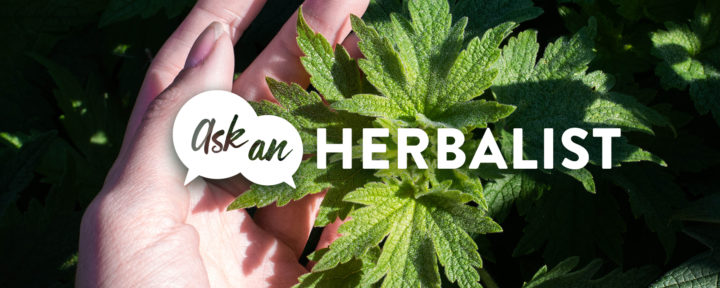We love talking about herbs and herbalism, and we especially love answering your questions about those topics. That's why we brought in our team of herbal experts to respond to some of the most common questions and concerns we hear.
Our herbalists have decades of combined experience working with herbs — and the people who take them. They answer your most pressing questions, in our regular column “Ask an Herbalist.”
What is an herbal tincture?
Tinctures are liquid extracts that are made with potable alcohol as all or part of the combined extraction solvent, known as the menstruum. Following the extractive process, the tincture is then separated from the spent herb and is typically filtered. From there it is bottled as a single herb extract or blended with other tinctures to form a compound product. Tinctures are convenient and easily dispensed, taken in liquid form and added to water or other liquid according to labeled instructions.
The alcohol used in tinctures is the same ethanol produced by fermentation that you find in beer and wine. Alcohol acts as an excellent solvent for a wide variety of phytochemicals, especially those that have limited solubility in water. It is also an excellent preservative, so that tinctures typically last several years. Like other extracts, tinctures bypass the need to digest entire herbs in the gut and are easily absorbed. While the term “tincture” is sometimes applied to liquid extracts made without alcohol, technically only liquid extracts made with alcohol are tinctures.
The extraction menstruum can be tailored for each herb to best extract its unique phytochemical profile with an emphasis on known actives. This is done by using other components such as water to dilute the alcohol concentration. When starting with the highest concentration of naturally distilled alcohol, this gives a possible alcohol percentage range of about 20 to 95%. That range can accommodate extraction of more water-soluble polysaccharides all the way to highly alcohol-soluble resins. The menstruum can also be composed of other ingredients such as glycerin, which is used to curb precipitation. Since the menstruum becomes part of the finished extract, every component must be food grade and/or pharmaceutical grade.




